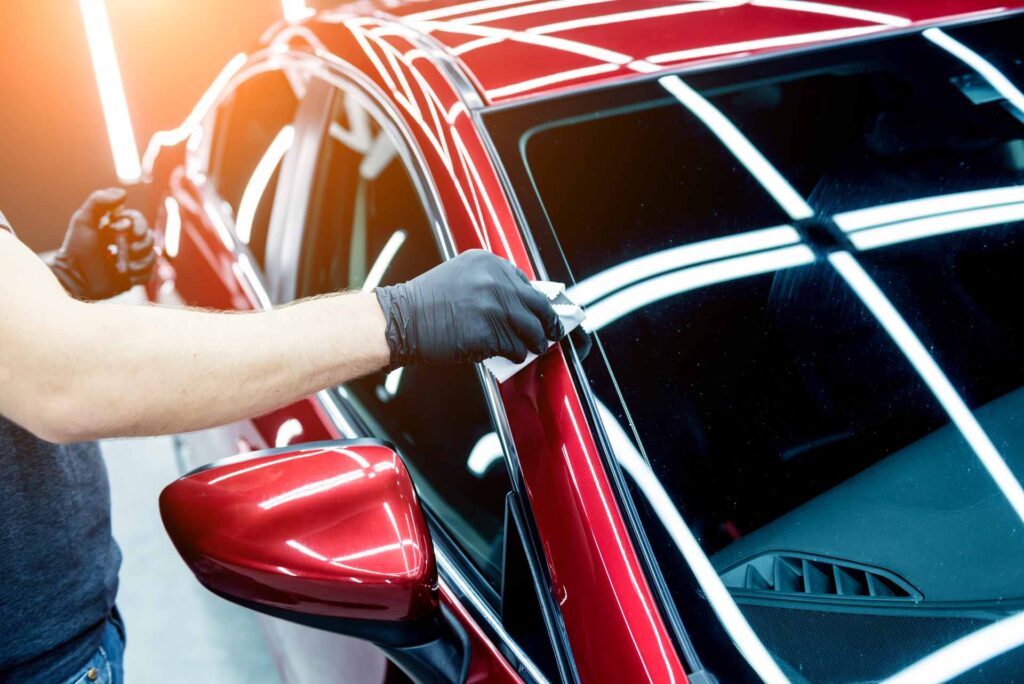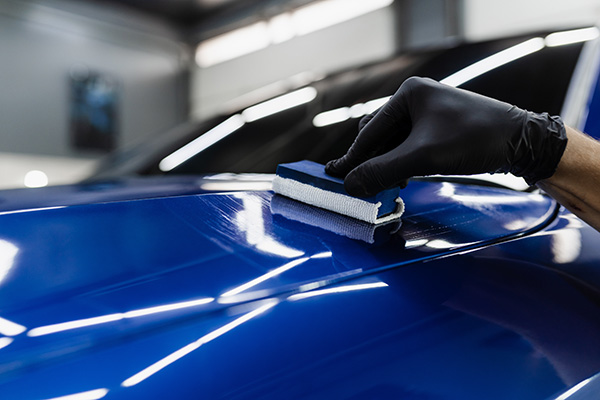The Price of Ceramic Coating: Is It Worth the Investment?
The Price of Ceramic Coating: Is It Worth the Investment?
Blog Article
The Relevance of Ceramic Coating: Shielding Your Auto's Exterior With Precision
In a period where keeping the visual and practical stability of your vehicle is paramount, ceramic finishing becomes a pivotal option. This protective layer not only defend against ecological hardships but likewise raises the aesthetic charm of your car. With its distinct bonding residential properties, ceramic finishing supplies a degree of defense that far exceeds conventional waxing techniques. How exactly does it attain such impressive results? As we discover the nuances of its application and compare it to various other options, one can not help however ask yourself regarding the specifics that make this modern technology essential for modern-day automobile treatment.
Advantages of Ceramic Coating
When it comes to protecting a vehicle's visual charm, ceramic finish provides significant advantages. By forming a semi-permanent bond with the automobile's paint, ceramic finishings effectively avoid oxidation and fading, guaranteeing that the auto preserves a glossy, showroom-like finish for an extended period.
Along with its safety qualities, ceramic coating supplies amazing hydrophobic homes, triggering water and other liquids to bead off easily. This function simplifies the cleansing procedure, as dirt and particles are much less most likely to stick to the surface, minimizing the regularity and initiative required for maintenance. In addition, the layer's resistance to chemical stains from acidic contaminants like bird droppings and tree sap is an additional noteworthy advantage, lessening potential paint damages.
Ceramic layers likewise boost scratch resistance, offering a layer that can soak up small abrasions and swirl marks. This attribute is particularly advantageous in keeping a beautiful surface, reducing the chance of noticeable flaws and maintaining the integrity of the cars and truck's paintwork in time.

Exactly How Ceramic Covering Functions
Comprehending the technicians behind ceramic coating discloses its effectiveness as a safety remedy for vehicles. Ceramic layers are basically fluid polymer applications that chemically bond with a vehicle's factory paint, creating a protective layer. This layer works as a barrier versus environmental pollutants such as dust, ultraviolet, and gunk rays, which can break down an auto's outside with time. The crucial part in ceramic coating is silicon dioxide (SiO2), which stems from quartz crystals and is recognized for its phenomenal hardness and longevity.
Application of ceramic finish involves a precise procedure. This shield enhances the vehicle's gloss and hydrophobic residential or commercial properties, facilitating much easier cleaning by causing water and pollutants to bead and slide off easily.
Furthermore, the finishing's molecular framework gives resistance to small scrapes and chemical discolorations. Unlike waxes or sealants that sit on top of the paint, ceramic finishes integrate with the surface area, using resilient defense. This assimilation is basic to its performance, making certain the automobile's surface stays immaculate for years.
Comparing Ceramic Coating to Alternatives
In the realm of vehicle protection, ceramic finish stands as an awesome alternative when compared to traditional choices such as waxes and sealants. While waxes supply a short-term shiny finish, normally lasting only a couple of weeks to months, ceramic layers provide a longer-lasting remedy, commonly sustaining for several years. This resilience is credited to the chemical bonding that takes place when ceramic coverings are used, developing a strong layer that is immune to ecological risks.
Contrastingly, sealants, although even more resilient than waxes, still drop short of the durable protection offered by ceramic finishings. Sealants can usually last for approximately a year, offering a synthetic shield versus specific elements. Nonetheless, they lack the exceptional you can try here hydrophobic homes and UV protection that ceramic layers provide.
Additionally, ceramic coverings supply improved scrape resistance, which neither waxes nor sealers can efficiently match (ceramic coating). This is specifically helpful in maintaining an auto's beautiful look. Additionally, ceramic layers simplify upkeep efforts by minimizing the adherence of dust and gunk, thereby promoting less complicated cleaning. In recap, while conventional waxes and sealers offer standard protection, ceramic layers blog present a detailed, long-term service that substantially enhances and preserves the automobile's outside coating.
Application Refine Described
Using ceramic finish to a lorry calls for a meticulous procedure to ensure optimum outcomes and durability. The first action entails extensively cleansing the auto's surface area to get rid of dust, oil, and previous waxes. This is vital for making certain the layer sticks appropriately. A pH-neutral shampoo and a clay bar treatment are frequently used to achieve a pristine surface area. As soon as cleaned up, the car is dried and polished to remove any kind of flaws, as any existing scratches or swirls can come to be a lot more pronounced after the covering is applied.
Complying with surface area prep work, the application of the ceramic finishing starts. Using an applicator pad, the ceramic finishing is used in small sections to make sure also coverage.
After application, the finishing calls for a particular treating duration, during which the car must be protected from water and pollutants. This treating procedure can vary depending upon the item but typically varies from 24 to 48 hours. Inevitably, this comprehensive process is essential in attaining a durable and shiny surface.
Maintenance Tips for Durability
To keep the long life of a ceramic coating, adherence to a regimented maintenance routine is necessary. Normal cleaning is paramount; use a pH-neutral automobile shampoo and soft microfiber mitts to avoid abrasions. Avoid automatic car washes, as their harsh brushes can compromise the coating's integrity. Instead, go with a hand wash to ensure comprehensive yet gentle cleansing.
Post-wash, drying a fantastic read out the lorry with a tidy microfiber towel stops water places that may deteriorate the finishing in time. Additionally, use a ceramic finish booster every few months. These boosters reinforce the hydrophobic homes and enhance the layer's safety capabilities, guaranteeing it stays effective versus pollutants.
Bear in mind that car park places play an essential duty in upkeep. ceramic coating. Whenever feasible, park in shaded areas to minimize UV direct exposure, which can gradually deteriorate the covering. For lasting storage, take into consideration utilizing a car cover for included defense against ecological elements
Verdict
In final thought, ceramic layer offers as an essential safety layer for car exteriors, using durable protection versus ecological variables such as gunk, uv, and dirt rays. Recognizing the application process and adhering to upkeep recommendations are necessary for making best use of the longevity and efficiency of ceramic finish.
When it comes to protecting a cars and truck's aesthetic charm, ceramic coating offers substantial advantages. By developing a semi-permanent bond with the lorry's paint, ceramic finishings efficiently stop oxidation and fading, making sure that the automobile keeps a shiny, showroom-like finish for an extended period. Ceramic coatings are basically liquid polymer applications that chemically bond with a vehicle's factory paint, producing a protective layer. In summary, while typical waxes and sealants offer standard defense, ceramic coatings offer a thorough, long-term service that substantially boosts and protects the vehicle's exterior coating.

Report this page